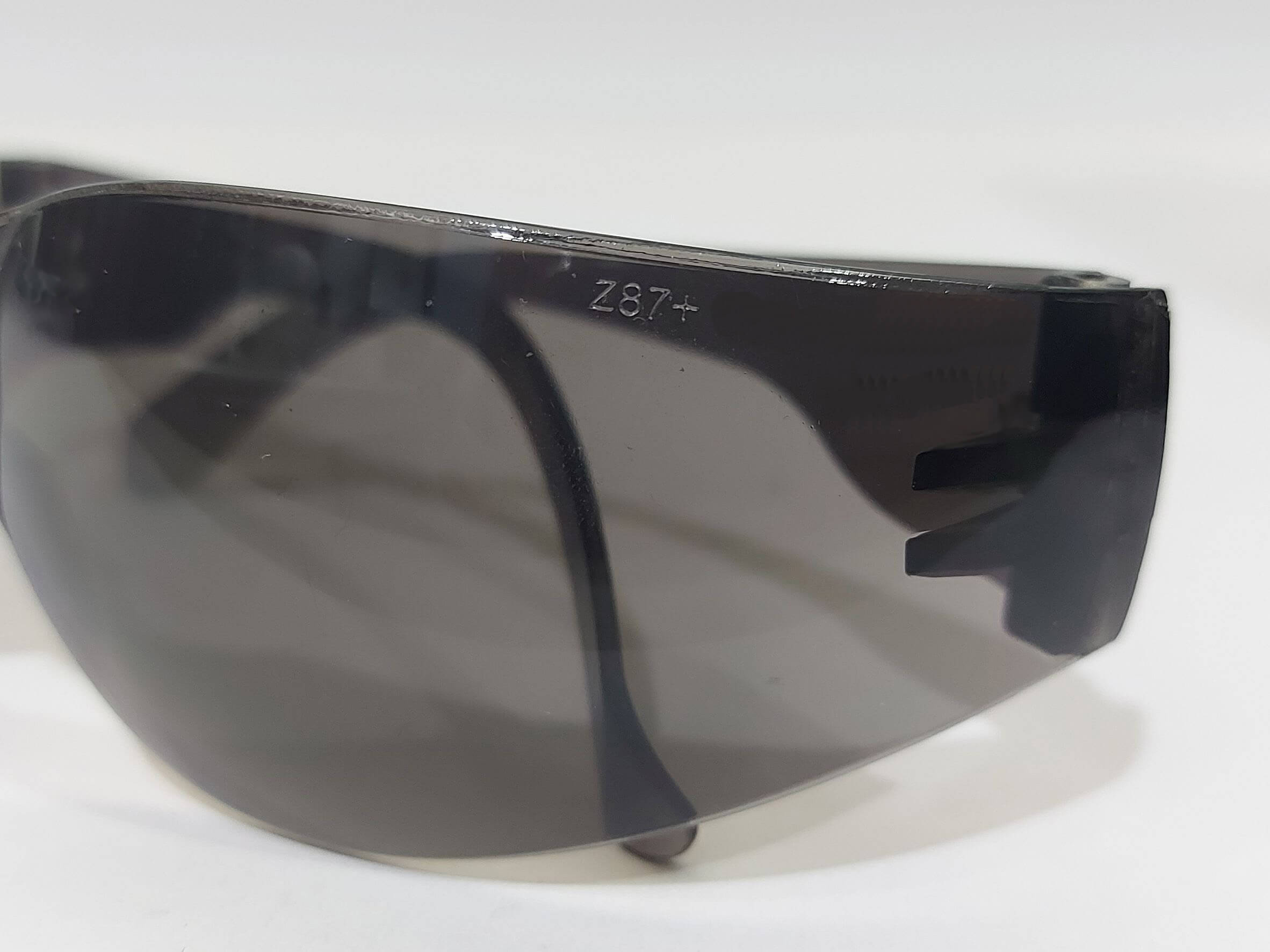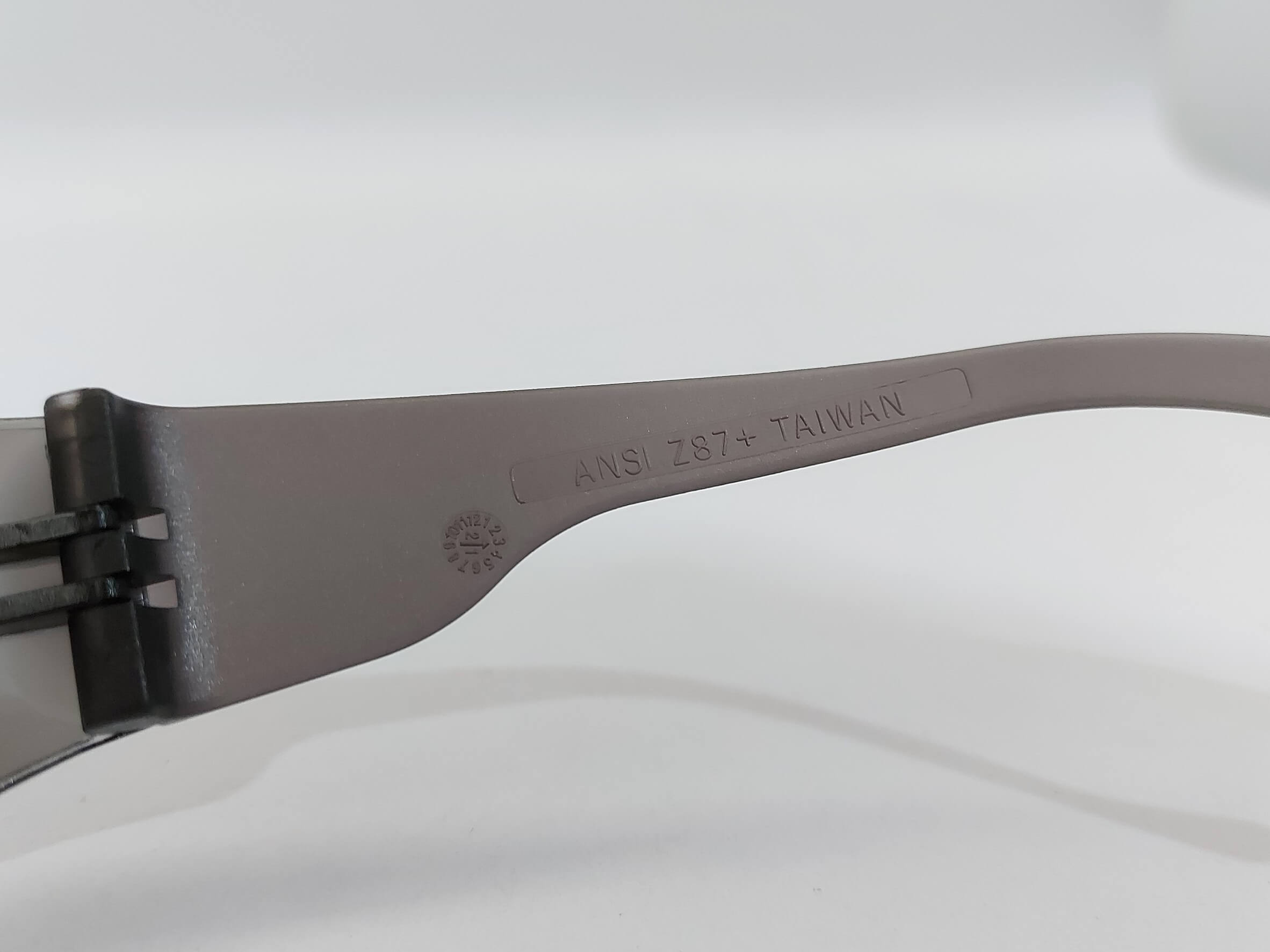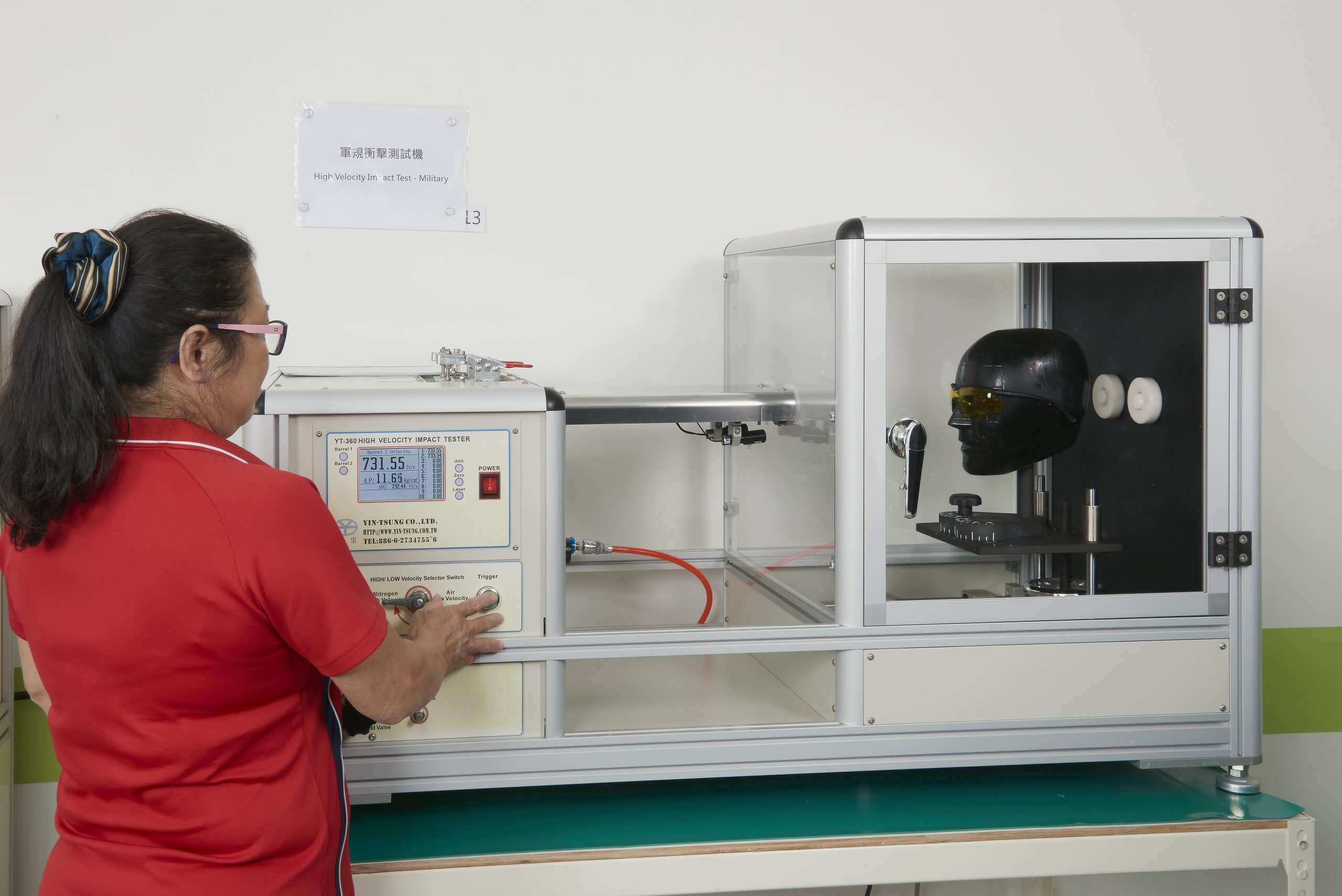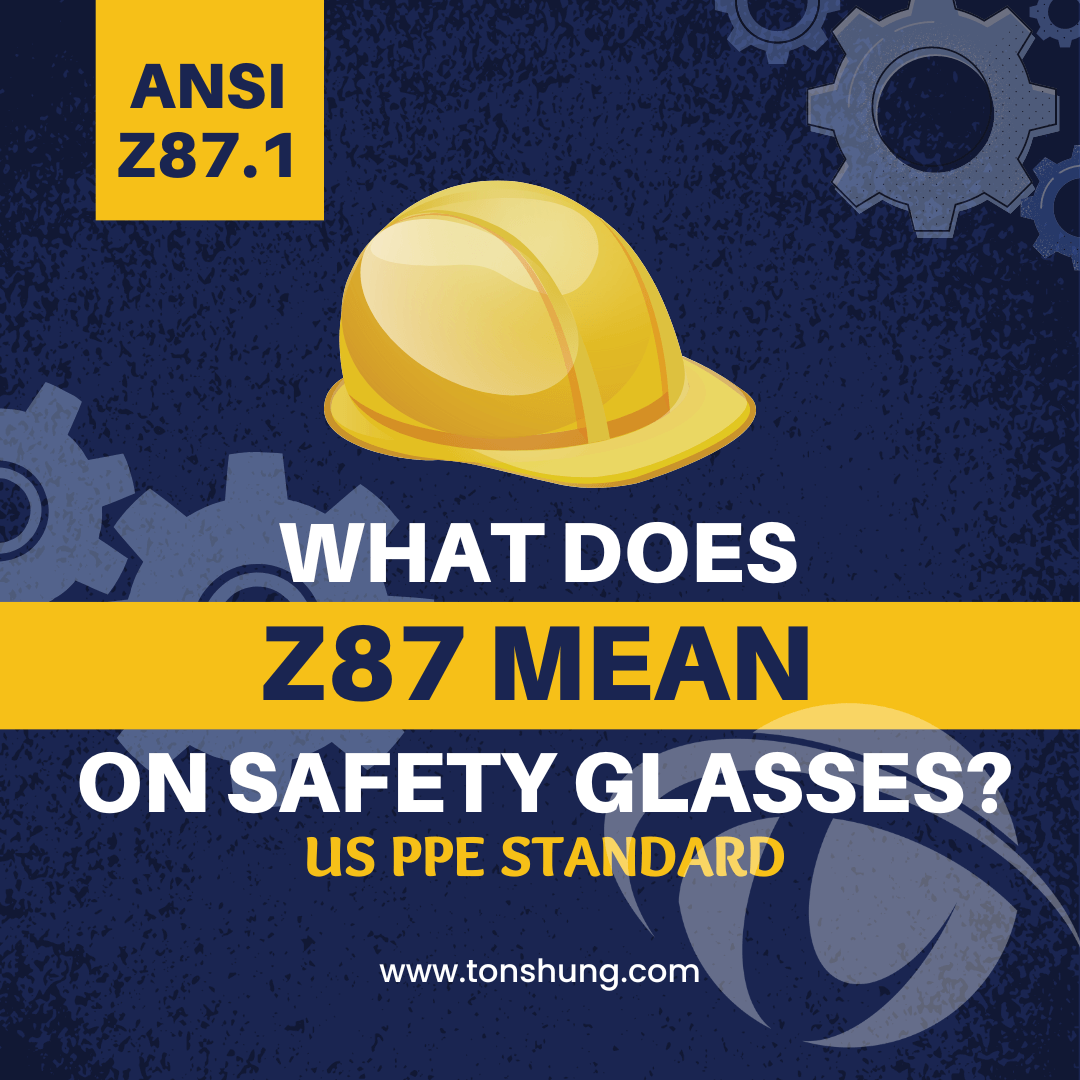What does Z87 mean on safety glasses?
Before we get into “What does Z87 mean on safety glasses?” asking ourselves “Why do we need to wear safety glasses?” is a good place to start.
Eyes are the window to the soul, letting us see the beauty of life. However, do you know many potential eye hazards can be present in every industry? According to AAO and the U.S. Bureau of Labor Statistics, about 300,000 Americans are sent to the emergency room each year because of workplace eye injuries. Around 40% of cases have happened in the manufacturing, construction, and mining industries.
How to choose the right safety glass to protect our eyes away from the occurrence injury?
How to choose a right safety glass to protect our eyes away from the occurrence injury?
Select an eye protector with ANSI Z87.1 certificate or Z87/Z87+marking. Before going into the detail of Z87, we should know what does Z87 mean on safety glasses.
What is the ANSI?
The American National Standards Institute is a consensus of thousands of individuals, representatives of companies, government agencies, trade associations, consumer groups, and others responsible for the uniformization of testing standards and guidelines for a variety of products used in business.
The institute’s goal is to approve standards to enhance both the global competitiveness of U.S. business and the U.S. quality of life by promoting voluntary consensus standards and safeguarding their integrity.
This includes many different fields and products, amongst which safety goggles and safety glasses.
What is the Z87 certification?
As said previously, the ANSI provides a lot of different certifications for different types of products. The Z87 certification is the reference for “Occupational and Educational Personal Eye and Face Protection Devices”.
To minimize the possibility and reduce the severity of injuries from the working place, such as impact, heat, chemical, dust, optical radiation…etc. The standard lists the general and optional requirements, testing method, permanent marking, care, and use of protectors. Once the eye protection complies with Z87.1 basic requirements can be marked with “Z87” on the product.
To additional statement the specific protective purpose or range, the standard categorized the test and marking to three as follows:
| Hazard type | Hazard assessment |
| Non-Impact
|
For the general working environment which without high impact, chemical splash, or optical radiation potential risks. |
| Impact | Strong contact with flying objects such as chips, fragments, sand, and dirt from chipping, grinding, and machining. |
| Chemical Splash and Dust
|
Chemical splash droplets, mists or liquids fumes, vapors. Blood splashes or aerosols.
Dust –fine particles, dust, nuisance or airborne from woodworking, buffing, or dusty environment. |
| Optical Radiation
|
Optical Radiation –Ultraviolet (UV) and blue light, infrared (IR), glare and intense light from welding or laser work. |
Reference from the ISEA Selection and use guide of eye and face protection, 2016.
How we do the Z87.1 Impact testing in-house laboratory and marking?
You probably form a fundamental concept with all the above descriptions to answer, “what does Z87 mean on safety glasses?”. And let’s deep dive into the Z87.1 Impact testing in-house laboratory and marking.
High mass impact test:
To earn the coveted ANSI Z87.1 certification, frames and lenses must withstand the weight of a 500g (17.6 oz) pointed projectile dropped from a height of 127cm (50.0 in). The lens must remain intact, and no part of the frame can be detached. This is a basic standard requirement of Z87, which you can see a marking “Z87” on the safety glasses.
To have a higher impact rank of protection, the glasses need to pass the additional tests as below and add a” +”, which is marking “Z87+”.


High-velocity impact test:
ANSI requires that our frames and lenses withstand the impact of a 6.35mm diameter steel ball weighing 1.04 g fired at a speed from 45.7 to 91.4 m/s (150 to 300 ft/s). Absolutely no contact with the head form is allowed. We repeat this test on 6 different angles aimed at different areas of 6 devices to make sure our safe eyewear is practically indestructible.
For different devices of high-velocity impact requirements as below:
| High-Velocity Impact Testing | ||
| Device type | Minimum Velocity | |
| 6.35 mm (0.25 in.) diameter steel ball | 6.00 mm (0.24 in.) diameter steel ball | |
| Welding helmets | 45.7 m/s (150 ft/s) | 50.9 m/s (167 ft/s) |
| Spectacles/Readers/Magnifiers | 45.7 m/s (150 ft/s) | 50.9 m/s (167 ft/s) |
| Goggles/Full facepiece respirators | 76.2 m/s (250 ft/s) | 84.7 m/s (278 ft/s) |
| Face shields/Loose-fitting respirators | 91.4 m/s (300 ft/s) | 101.5 m/s (333 ft/s) |
From ANSI Z87.1 2020 standard
Tonshung’s In-house lab has ANSI Z87, EN166, and MIL-PRF-32432 High Impact testing machines.

Penetration test:
Lenses shall be capable of resisting penetration by a weighted needle with a total weight of 44.2 g(1.56oz) dropped from a height of 127 cm (50.0 in).
For optional test requirements and marking as below:
Chemical Splash and Dust Marking
- D3 indicates splash and droplet protection.
- D4 indicates protection from dust particles.
- D5 indicates protection from fine dust.
Optical Radiation Marking
- W plus a shade number shows the level of welding protection
- U plus a scale number shows the level of UV protection
- R plus a scale number shows the level of infrared light protection
- L plus a scale number shows the visible light filter
- V indicates photochromic lenses
- S indicates a special lens tint
Other’s list of the stampings and their meaning:
- Z87-2 on the front of the frame and on both temples indicates prescription eyewear
- H indicates a product designed for smaller head sizes
Contact us for more information if you are interested in Z87.1 safety eyewear or other devices.
Learn More: What Does EN166 Mean? European Standard For Safety Glasses?
Learn More: Safety Glasses Standards: Guide To Buy A Safety Glasses

